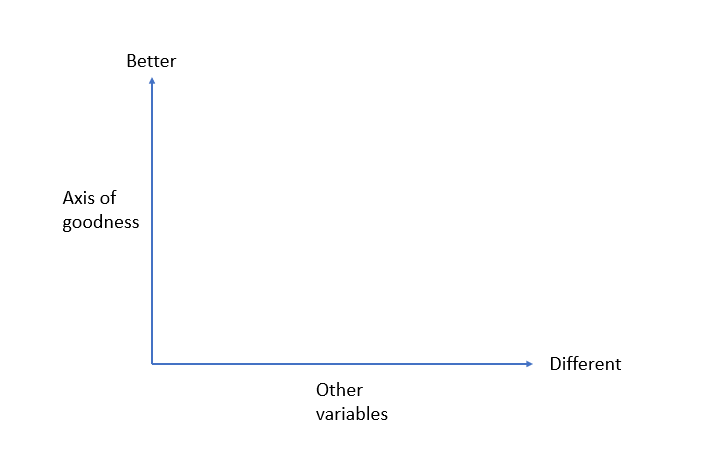My experience of strategy development is that it often boils down to the same few questions and when answers to these are clear, then articulating the strategy becomes straightforward. Four Key Strategic Questions relate to Identity, Purpose, Success and Means.
Identity: Who is “us”?
The question of identity – put more colloquially – “Who is ‘us’? “ is the primary strategic question. In many situations the answer may seem obvious – or given as a constraint – but it is always worth challenging the assumptions about identity and it is an area that gets relatively little attention. Perhaps the most significant strategic choice is whether to re-draw boundaries: should we be determining a strategy for what we currently see as “us”, or should we embrace others and consider perhaps an industry response? An ecosystem response? A national response? We may also consider moving to smaller scale rather than larger scale: perhaps let three divisions each develop their own strategy, or let Europe, Asia/Pacific and Americas each develop their own?
The distinction between “us” and “them” can have a porous and dynamic boundary when we consider ecosystems and diverse forms of collaboration and partnerships. But rather than making the who is “us”? question obsolete, this diversity makes it more important to consider.
Strategy development is rarely a completely linear process (typically some iteration or adjustment is needed) even when the process is linear there is a benefit in checking back on the inputs and assumptions once the implications begin to become clear. Recommendations regarding changing our perspectives on our identity can come as a result of a strategy process but there is huge value in giving consideration to identity at the start of the process.
Purpose: Why are we here?
This is sometimes referred to as mission. It is more than just activity, it’s about intent and outcome.
Note that purpose (mission) here is “relatively timeless” – it’s not something that changes frequently. In many cases it doesn’t change for many years – even decades.
Mission statements should generally stick to purpose and avoid getting into success criteria (positioning on the Axes of Goodness – see below) or vision (as a compelling description of a preferred alternative future). [or at least if they include such things, it’s clear that they are success criteria and vision and not some part of the mission]
Success: “Axes of Goodness”
Consider a graph where going along an axis away from the origin moves you in the direction of “better”. Such an axis is an Axis of Goodness. More is always better.

This is not about setting a specific target for success (such targets might better fit to “vision” – being part of the compelling description of a preferred alternative future) it’s more about determining the basis on which success is assessed. It’s about agreeing the scales against which success will be measured, what the “axes of goodness” are against which a particular target level of success might from time to time be set.
Traditional examples of such axes are product development lead-time (concept to market), market share, stock turns, average revenue per user, hotel room occupancy,
Newer examples include % revenue from digital products and net promoter score (NPS)
Axes of Goodness are expected to be relatively timeless (rarely change from year to year) even though the specific targets along the axes may change much more frequently.
Agreeing what the axes should be is a political question (in the wholesome sense of a community deciding on what is best for the community, rather than the modern connotation of backstabbing and self-aggrandisement) but is often significantly constrained by views of potential investors.
Identity, purpose and the axes of goodness are generally inter-related and should form a coherent set.
Significant innovation often comes from changing the axes of goodness rather than changing performance against an existing axis.
These ideas are explored further in other sections on Value , Measurement and well-behaved KPI’s.
Means: How will we do this? (“levers of control” )
A “lever of control” is something you can do to achieve a desired outcome.
A good discipline in strategy formation is to consider what the levers of control are. This helps keep the strategy anchored within the actionable and implementable. It is also useful in developing well-formed “Business Initiatives”
The interplay of these four Key Strategic Questions is illustrated in my recollection of working with a chain of UK Public Houses in the 1990s.
Heritage: Michael T Black of CSC Index used to frequently refer to three strategic questions – who is “us”?, what are our best interests? and what are our levers of control?